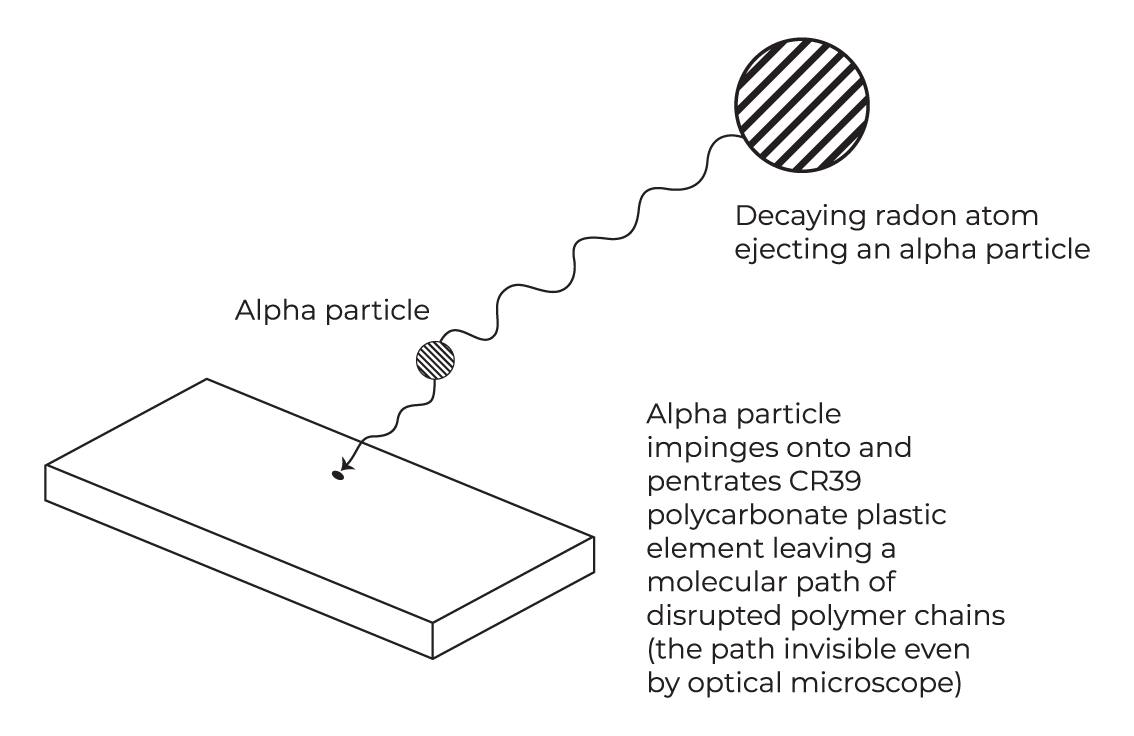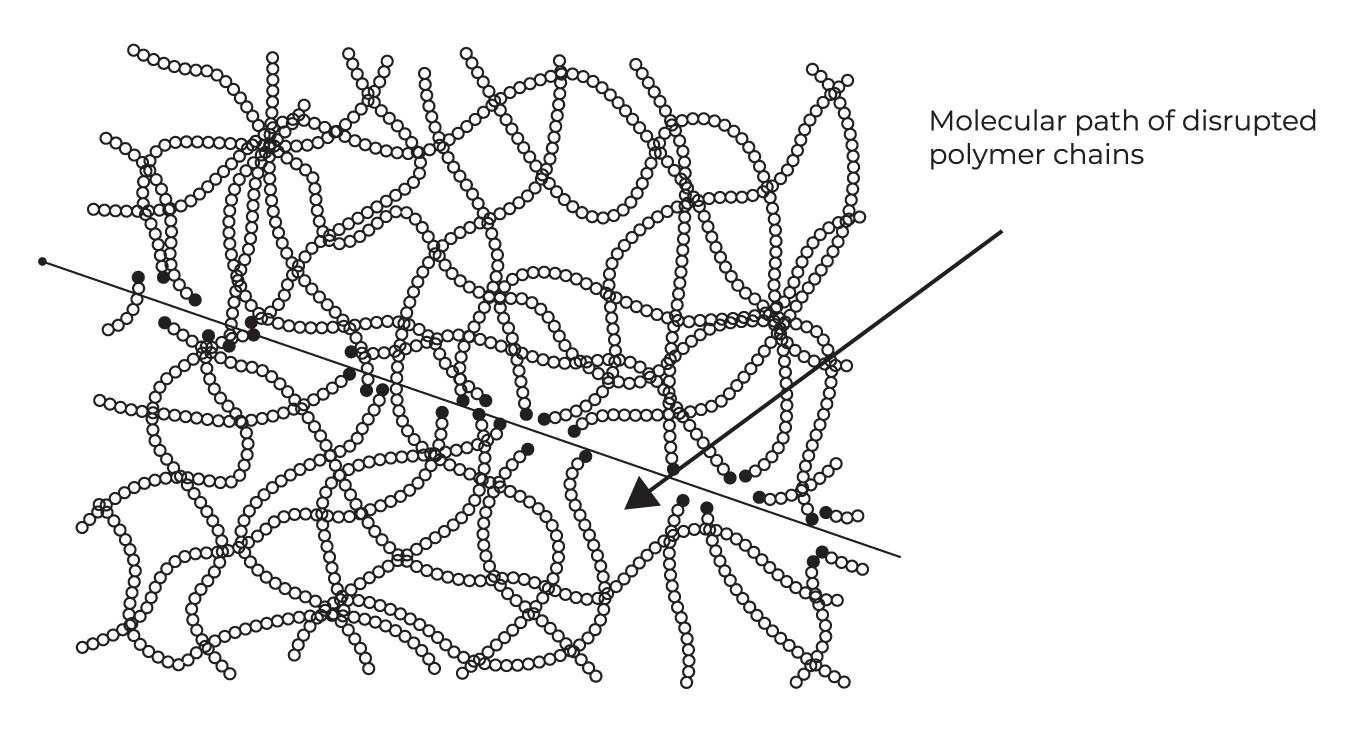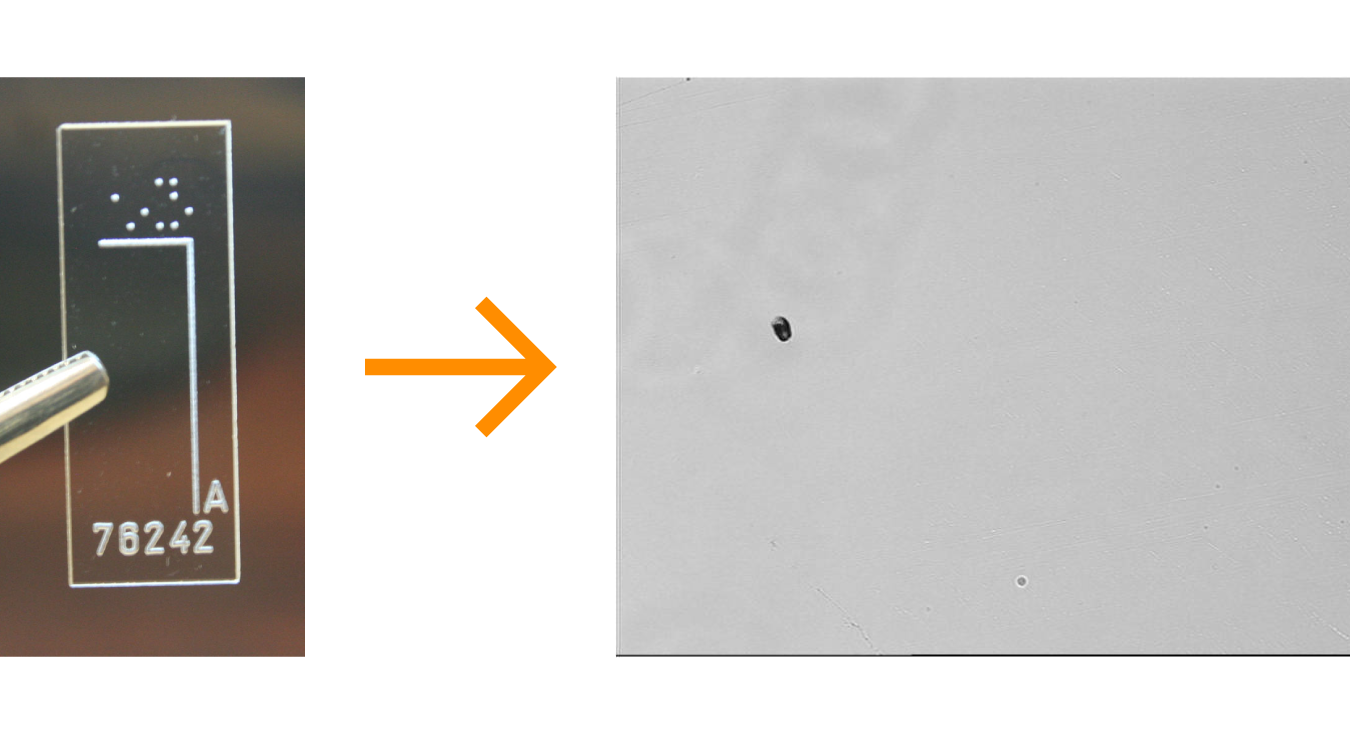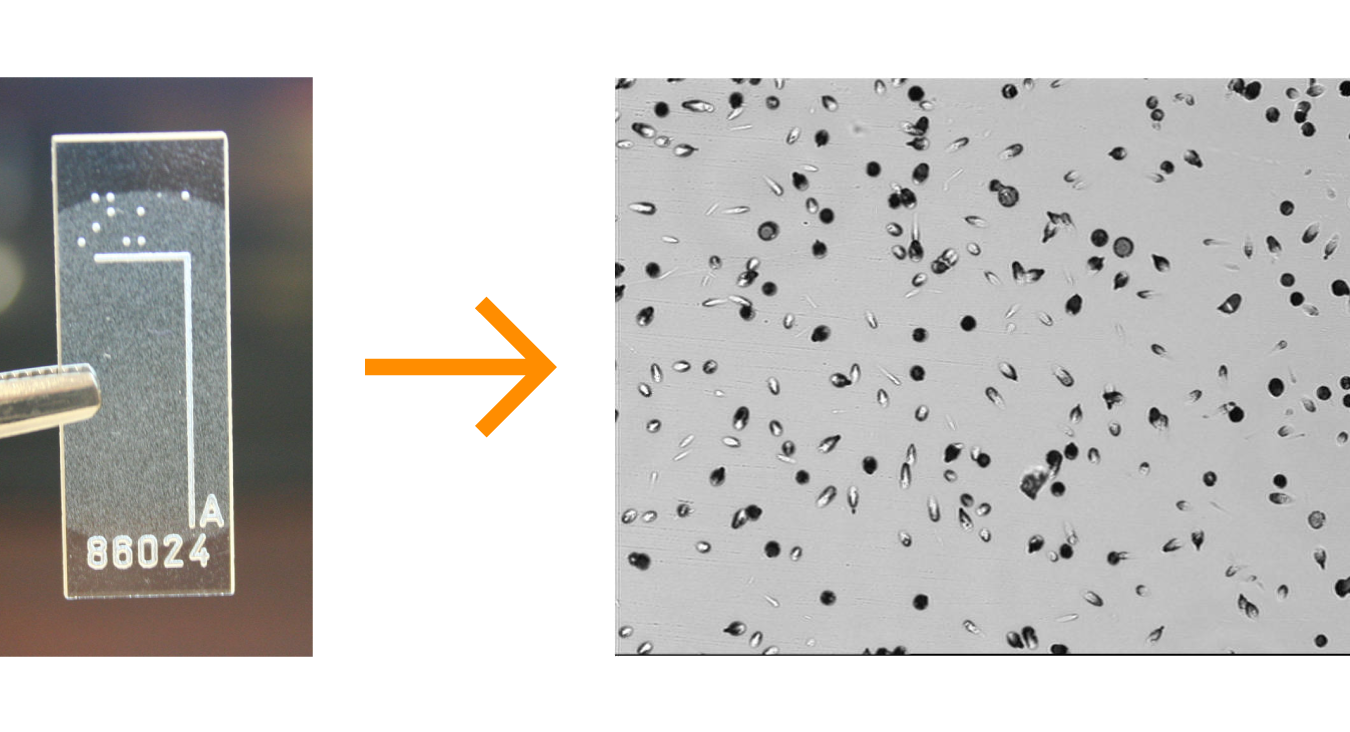


The next step entails chemical etching of the CR39 element which enlarges the molecular path to one visible as a black hole by optical microscope when the element is illuminated from the back
Low radon exposure
CR39 element 76242 | One microscope frame
High radon exposure
CR39 element 68024 | One microscope frame
The detector / monitor / dosimeter
Parc RGM contracted a supplier to manufacture its own radon detectors (dosimeters) moulded from a dispersion of conductive carbon black in a modified polypropylene polymer (or alternatively without the carbon black but with an orange colourant). The monitor measures about 43 mm in diameter at the flat base and is provided with an unique number.
An CR39 polycarbonate element, numbered with the same number as the monitor, is fitted inside the base of the monitor which is then closed with the tight-fitting hemispheric top half.
Radon gas diffuses into the monitor where it decays and leaves the alpha particle tracks within the CR39 element as described above.
There is a direct proportionality between the number of tracks and the concentration of radon. Parc RGM regularly calibrates its monitors at an overseas facility (typically in the UK, Germany of Italy) but it is envisaged that it will happen from 2020 at the new calibration laboratory being constructed at the National Metrology Institute of South Africa (NMISA).
Parc RGM also regularly partakes in inter-laboratory comparison testing, usually the one conducted by Public Health England.

TASL system

MI.AM system






